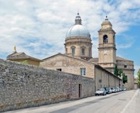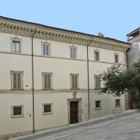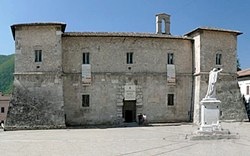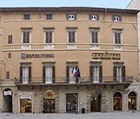Giacomo Barozzi da Vignola (1507-73)
Umbria: Home Cities History “Foreign” Architects in Umbria Hagiography Contact
Vignola in: Assisi Montefalco Norcia Perugia Terni


Giacomo Barozzi da Vignola (1507-73)
Umbria: Home Cities History “Foreign” Architects in Umbria Hagiography Contact
Vignola in: Assisi Montefalco Norcia Perugia Terni
Giacomo Barozzi is usually called simply Vignola, which refers to the town near Modena in which he was born. He trained in Bologna and arrived in Rome in 1536. He subsequently made his career there, apart from a period at the court of King Francis I at Fontainebleau in 1541-3. he died there and was buried in the Pantheon.
His two great masterpieces are:
✴the Villa Farnese at Caprarola; and
✴the Jesuits' Chiesa del Gesù in Rome.
Assisi
Design of Santa Maria degli Angeli (1569)

Montefalco
Palazzo Tempestivi (16th century)

Norcia
La Castellina (1554-63)

Pope Julius III commissioned Vignola to build la Castellina on the site of the old Palazzo del Podestà as a fortified residence for the papal governor. It now houses the Museo Civico.
Perugia
Cappella della Corgna (1555-62)
Cardinal Ascanio della Corgna commissioned the “Giovanni di Domenico Fiorentino” (who has been identified as Giovanni di Domenico Caffarelli da Settignano) to build this chapel in San Francesco al Prato (on the left wall of the right transept), following a design by Vignola. Two years later, Giacomo della Corgna commissioned its decoration by Giovanni Battista Ingoni, in a contract that specified that Vignola would assess the work and set the price.
Palazzo Graziani (1585)

Terni
Design for Ponte Sant’ Antonio (1569)
Ponte Sant’ Antonio was badly damaged by floods in 1500 and again in 1550, and was then replaced by a temporary wooden structure. Vignola designed a more permanent structure in 1569, but it continued to cause problems and had to be demolished.
Return to the page on Art in: Assisi Montefalco Norcia Perugia Terni.
Return to “Foreign” Architects in Umbria.